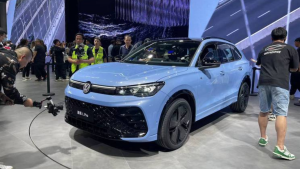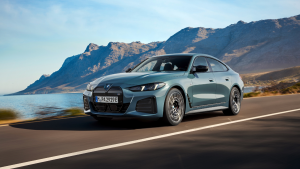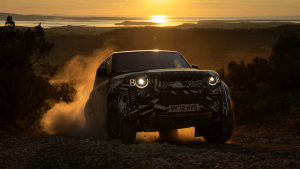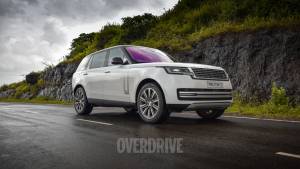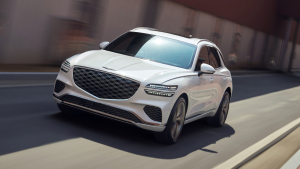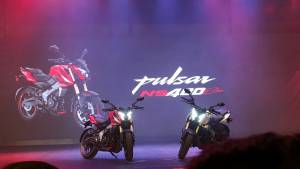Storm in a C-Cup
Abhay Verma
Updated: July 24, 2013, 06:39 PM IST
Back in the day when car launches were fewer, we all looked forward to the day when the pace of launches would be upped and we would be able to get newer and better cars on practically a daily basis. Turns out, that idea sounds way better as a wistful moan over a beer with friends than in real life. In reality, that is a lot of work. Someone has to go out and drive all of this blossoming excellence, test them, pick out their strengths and weaknesses and figure out if they are a good time or not.
Does that sound like I am complaining? Hell no! You see testing in essence is a guarantee that you will be freed from the confines of your desk and then shortly be seen queued up at a petrol station, filling up a plethora of cars - diesels in this case - and heading out for the highway. And what are we filling up and driving today? A whole bunch of diesel C-segmenters, the current favourite Volkswagen Vento is here, as is the new, appealing and feature-loaded Hyundai Verna and brawling with them is the chubby Ford Fiesta.As is now considered the norm with comparos like these, I will spare you the gritty detail on the Vento and Verna, cars you are already familiar with, but focus sharply on the Fiesta since this is the new Ford's first exhaustive test in the magazine.
Styling & design
It's now normal for us to skirt the contentious issue of design by putting likes and dislikes down to personal choice. But in the Fiesta's case, I have no such choice. This is a true representation of Ford's Kinetic Design family theme, a large trapezoidal grille beneath the Blue Oval flanked by "Foxy Eyes" headlamps and chrome-bezelled fog lamps set into the middle of the lower air dam surfacing. Sharply defined wheel arches neatly interrupt a rising shoulder line that begins under Foxy but only gains serious strength and definition on the drivers door, tapering to a finish just before the tail lamps. That along with the rising, tapering greenhouse and the crease at the bottom of the doors is supposed to give the car a wedge-shaped profile visually, the usual way to create a dynamic design. Similar musculature can be spotted in the bonnet definition, the tiny lip spoiler and the neatly notchback-style rear roofilne.
But let's get this straight. It will be a snowy day on the summer solstice in Delhi before I can start calling the Ford Fiesta good looking. The car looks a little like Ben Johnson after he stopped training for his explosive 100m runs, a little too filled out from most angles.Which shouldn't automatically turn the Fiesta into a Biggest Loser contestant - just look at how the first drive reviews all said it is a good looking car. But unfortunately, its nearest rivals here are nearly fat-free, despite subscribing to dramatically different diet plans. The Verna features Hyundai's excellent new 'fluidic' form, allowing sharp creases, dramatic, taut body panels, sharply articulated head lamps and features to create an appealing, sharp looking design - something no one would have expected from this Korean auto major as recently as last year.
On the other hand, Volkswagen almost literally shaved off all the fat and excess detail on their recent cars and the Vento has turned out to be a restrained, understated, straight-lined looker which I think looks good today and has a design that will substantially refuse to age quickly and look old.
When you bring the Fiesta in and park up next to the other two, it begins to look decidedly awkward, especially from the rear. It's gauche country cousin territory, where the tall and narrow proportions, an overtly generous boot design and the arched tops of the tail lamps conspire to make the Fiesta look startled and disproportionate.
But it may not be all doom and gloom because our editor did opine after some chin stroking that the Ford looked youthful. Then again, this is the man who wears bright orange leathers. To be fair, he calls the Fiesta out for having flair, while the Verna has appeal and the Vento, maturity. And also, every time I saw the rear of the Fiesta hidden from view, the look improved by leaps and bounds. Which tells me that it's the way the body is executed aft of the B-pillar that makes the Ford look awkward. Let's just say the design began well, but the inspiration sort of tapered off as the designers got to the rear of the car.
On to less contentious issues and body panel fit and quality on all three is very good with the Vento as usual leading from the front. It has the most bass in the thuds of closing doors, and the Verna is the opposite, displaying a Japanese tinny-ness in the same situation. Ford is the middle man, edging closer to the Vento in this regard than the Verna. Personally, I prefer the Vento's understated design to the Verna, but I do firmly believe that the Hyundai is among the best looking cars in the C- as well as the D-segment in India today. The Fiesta? Well, I think the (global) Fiesta makes a swell hatch and a properly storming looking WRC car, but its development into a sedan could have been sharper.
Engines & performance
The Ford Fiesta is being offered here with 1.5 litre four-cylinder engines both in petrol and diesel guises and both are scaled down versions of the 1.6's that did duty in the Fiesta Classic aka the older Fiesta. In the diesel, a larger turbocharger - intercooler equipped - helps boost output to 90PS at 3750rpm, the lowest in this segment (matching the SX4 and trailing the Verna 1.6 by a hefty 38PS and Vento by a not insignificant 15PS). Torque is 204Nm at its 2000-2750rpm peak, again, piping the SX4 by a marginal 4Nm while the Verna and Vento are as much as 50Nm or more ahead. The Fiesta, also happens to hit its peak torque at the highest revs amongst these cars. I guess it's some consolation that the SX4 at least has a lower power-to-weight ratio, eh?
Between the 8-valve SOHC engine (all others are 16-valve DOHCers) and the five speed gearbox - Verna has a six-speed - the Ford feels either a little slow, or like its chassis and dynamics could have really sparkled with a more gutsy motor. That isn't to say it isn't a good car to drive, however. Get past the slightly rubbery gearshifts and you will enjoy the nice mid-range grunt and soak in the lack of diesel clatter. Driving in the city is typically easy despite the slight lag below 17-1800rpm, and on the highway, it gets to about 130kmph without delay before performance starts to taper off. In pure numbers terms, it is the slowest car here by far, taking 13.33 seconds to a 100kmph, 1.63 seconds slower than the Vento and a full 2.71 seconds behind the sizzling Verna.
But the Fiesta isn't without ammo. It also manages to boast the highest ARAI economy figure of this lot at 23.5kmpl, with the Verna/Vento 1.2 and 3kmpl behind respectively. And we all know that more people buy cars based on this parameter than on the 0-60kmph time, right? In actual use, though, we discovered that the economy picture isn't quite that rosy. In city use, the Fiesta's 13.6kmpl was just 0.3kmpl better than the Vento - the Verna manages 12.8, while on the highway, 18.4kmpl was all the Fiesta could manage with both the Vento and the Verna well ahead on this count at 19.69 and 23.67kmpl. Overall, the 14.8kmpl the Fiesta returned matches the Vento but is unable to slip past the excellent Verna which at 15.22kmpl is the most efficient of this lot - and has one of the best diesel engines in this segment in the first place.
Ride quality & handling
We have noted repeatedly that the Vento has excellent manners and in this company, that remains true. The Vento is however nose-heavy in feel and there is significant pitch and dive thanks to its soft suspension, to the point where exceptionally careless traverses over speed breakers can actually cause the front bumper to grind down from nothing more than running out of suspension travel. Please don't ask me how I came to know this.
The Verna errs on the side of ride quality and between its over-servoed (and a half) steering and it's squishy ride, handling is barely adequate, especially at high speed out on the highway. That said, its ride quality focus does make it one among the most comfortable cars to waft around the city in, more so if you are in the rear seat. And at city speeds, you will - as many, many readers have told us - be impressed with the Verna's city manners.
The Fiesta, in this company, is a revelation. Ford has always had excellent ride and handling built into its cars, and the Fiesta continues in that tradition with élan. Then again, the B299 (Fiesta's code name) is built on the B2E platform, which has also produced the Mazda2, a car that's won loads of acclaim and awards.
Punting the cars hard over a badly scarred mountain road, the Verna felt downright out of its depth while the usually stolid Vento started to feel a bit on the edge and fragile. The Fiesta not only defanged the road with great success, it also managed to do this without impairing its involving, extra-eager handling. You can attack corners with all the enthusiasm you can muster and the car never flinches.
Properly real-world awesome. In all this pitch, body control and wheel control are exemplary and while there may be more than a few holes in the Fiesta story, it is by far the most enthusiast-friendly set of wheels in this group by quite a margin.
Where the Vento won one back was on our usual expressway runs, demonstrating once more its unflappable open road manners, especially on concrete joints and over sharp bumps. It's these two situations where the Fiesta allows the road to seep into the cabin.
In terms of specifics, all the three cars here stick close to what has become the hatch-to-sedan underpinning template. Like the Vento and the Verna (and indeed, the SX4), the Ford also employs MacPherson's struts with coil springs up front and torsion beam set ups at the rear.
The Verna remains the sole car to offer an all-disc brake setup, with the Fiesta also opting to use drum brakes at the rear. But the safety spec for the Ford is up to the mark. All the variants come with ABS with EBD, two airbags plus the usual features - crumple zones, child-locks in doors etc. The top-end Verna gets six airbags. In our braking tests though the Fiesta once more amped up its dynamic excellence scores with excellent braking performance from 100kmph.
And let's talk about traction control - because someone has to.
You see, we failed to locate any references to traction control in all of the Ford literature, except for the user's manual, which has a page on it. There's no traction control button in the car, but driving enthusiastically in the wet, as well as in performance testing, our test car's traction control occasionally went off, yellow indication flashing away on the meters. Traction control is a segment first in the C-segment and we've discovered that the system really works too, so one more notch for Ford on the dynamics (and safety) front, then.
Interiors & features
Ford said at their media drives that the interiors of the car draws inspiration from cellular phones and high-end watches. This is clear in the cellphone keypad design that has been injected into something as mundane as the button layout for the infotainment system. But there's a problem. In OVERDRIVE, hardly the most technology-friendly organisation in the business, we've more or less all moved on to phones that usually have one button or less. So suddenly, instead of looking futuristic and slick, the Fiesta interiors start to look old-fashioned and cluttered. The metre binnacle, for instance, features heavily detailed sporty-looking 'cups' for the meters, but when you slide into the car, you note the driver focus of the cabin design in the same breath that you note that the sticking out centre console top and the meter binnacle seem to come very close to you and rob the cabin of its sense of space. That being said, despite the intermediate resolution of the centre-mounted information display screen, the meters and the centre screen both offer a good array of data with the top models of the Fiesta boasting class-leading or class-beating equipment. But it isn't without hiccups. The voice-recognition system, for instance, allows you to adjust music, air-conditioning and what have you.
But the selection of key words that trigger events is skimpy, so you have to learn the car's language, rather than have it adapt you to yours. Say 'aircon' or 'ac' and the car will say it's version of "What the heck are you yapping about." You have to say 'climate,' I kid you not, to get the voice system to trigger the air conditioning menus. Similarly, say twenty-three normally to the airconditioning menu and it usually won't get it. Say twenty... three... and then it almost always will. It's a good system, I must say and most of you will get past the threshold, but I'm telling you with ten per cent more work, that system would be the toast of this and three segments above it. There are also other niggles like the trip meters taking nearly five seconds to reset while a confusing animation plays out, blanking out one digit at a time.
The infotainment system sits at the head of a silver-finished center console which at first glance led me to quip that the inlay was fake plastic. Having spent more time in the car, I kept returning to the conclusion that the Fiesta doesn't feel premium. It has amazingly sporty-feeling seats with substantial bolsters, a properly chunky steering wheel, a comprehensive set of features for infotainment (including audio controls on the steering wheel), nice-looking fabric seats and even cruise control, but it just doesn't feel like it is in the same league as the Verna or the Vento. The Fiesta's troubles continue into the rear seat, where it lacks more or less everything. It lacks the shoulder and knee room of the other cars, the rising window line makes the rear feel dark - and the dark colours Ford has chosen for the inside do absolutely nothing to help here. No rear-aircon vents, either.
In fact, the Verna here is the trendsetter with its cabin feeling far more airy, far more spacious and at least three or four notches more luxurious overall. And I'm not yet considering the exasperatingly long list of features, especially in the top model which includes, among others, keyless ignition, a parking camera, leather seats and a proper iPod dock. And while the Vento is easily second cabin-wise with its excellent quality, tremendous materials employed and feel and the most rear knee room in this test the Volkswagen is startlingly impoverished in the equipment department. Being unable to connect to the music system with a USB we've harped about on and on, but just look at the equipment table in the article and see how many N's are there on the Vento Highline. Hell, there are cars today at nearly a fourth of the Vento's price that out-equipment it, which is just silly for what is otherwise such an impressive automobile.

Verdict
As you can tell by now, I am not impressed with either the exteriors, or the interiors, or the engines of the Fiesta and I'll be the first to admit that this isn't looking good for the new Ford. It's superlative strength is its ride quality and handling balance which may not like sharp bumps but in Indian conditions is nigh unmatched in this segment as well as the segment above it. The Fiesta does have a comprehensive set of features and equipment and its safety equipment is par for the course as well. But to me, the real problem is that with prices ranging from Rs 9.27 to 10.42 lakhs for the diesel variants, it is a seriously, nay outrageously expensive car, with only the lavishly equipped top-flight Verna beating the Fiesta's price. And these prices are just not matched either by the performance or the premiumness of the car in feel in the case of the Fiesta. Hell, I think the Fiesta should have been pitched against the Dzire, a comparo it might have won with a solid margin. Sirish (and to an extent I), both were impressed enough by the Fiesta's dynamic prowess to look past its other issues. But that price has sealed this test, and I fear, the future of this car in our market. A repeat of the Figo's success now looks unlikely to me. The Fiesta was second here by a small margin until you consider the price. Then it's a distant third.
The Verna isn't perfect, we're not at all happy with the vague, overtly helpful power assistance to the steering at highway speeds and the soggy suspension, but there's no escaping the conclusion that Hyundai have gone and built a stonking city car. It looks good, it has the best, biggest and fastest engine here matched to a cabin that positively glows with the ability to coddle, comprehensive equipment as well as good, if a little soft, ride quality. And don't forget that the top variant has a full 6 airbags to justify that OTT price.
The Vento isn't perfect either, but it comports itself extremely well in the departments that require serious engineering - engine performance, highway manners, cornering ability and ride quality. It allows the other cars to inch ahead with its scant equipment specification, but is easily the most accomplished automobile here overall. And ultimately the Vento is the winner here by a tiny margin. It's got the blend of a spacious, high-quality cabin, excellent (though no longer leading) dynamics, relatively powerful engines, similar economy and shock, the lowest prices in this comparison test. I just hope no one goes and launches another C-segment diesel so I don't have to go through all this again. At least for six months. Please?

Price (Ex-Delhi)
Starts Rs 9.31 Lakhs
Starts Rs 9.31 Lakhs
Displacement
1493cc
1493cc
Transmission
Automatic
Automatic
Max Power(ps)
115
115
Max Torque(Nm)
250
250
Mileage
-NA-
-NA-
Price (Ex-Delhi)
Starts Rs 8.78 Lakhs
Starts Rs 8.78 Lakhs
Displacement
999cc
999cc
Transmission
Manual
Manual
Max Power(ps)
105
105
Max Torque(Nm)
175
175
Mileage
17.69 Kmpl
17.69 Kmpl
Related Stories
Top Stories
Latest Videos
Most Popular
1
2
1
2
Network18 Updates
Compare

